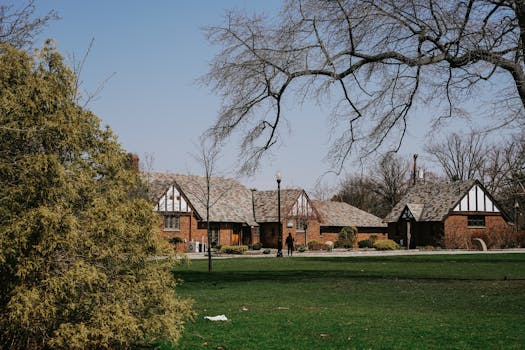Historic neighborhoods preserving stories and style
When visiting a historic neighborhood, have you ever stopped to think about the stories and style embodied within its walls? These neighborhoods are not just a collection of buildings and streets, but a living account of the past. They offer a window to the past, preserving both the architectural style and the memories of those who inhabited them. In the age of modernization, these neighborhoods serve as a reminder of our roots and the importance of preserving our history. From the ambiance to the architecture, let’s explore the significance of historic neighborhoods in preserving stories and style.
Preserving Architectural Style
One of the most striking aspects of historic neighborhoods is their unique architectural style. Each building has its own distinct character, reflecting the design trends and influences of its time. From Victorian to Art Deco to Colonial, these neighborhoods encompass a variety of architectural styles that make them stand out from modern developments.
But what makes these styles so special is that they are preserved over time. The lack of modern renovations and alterations allows for the original design to shine through, providing a glimpse into the past. This not only adds to the charm of these neighborhoods but also serves as a valuable education tool for future generations.
The Power of Preservation
The preservation of architectural style is not just about retaining aesthetics. It also plays a crucial role in maintaining the historical accuracy of a neighborhood. It allows us to witness the evolution of design and technology, and understand the cultural and social influences that shaped it.
Taking a stroll through a historic neighborhood provides a visual timeline of its development. The architecture reflects the economy and lifestyle of its time, providing insight into how people lived and the values they held. By preserving these buildings, we can relive and learn from our past, gaining a deeper understanding of our roots.
Storytelling Through Architecture
The buildings in historic neighborhoods not only reflect the time period in which they were built, but also have stories of their own. Each window, door, and facade has a tale to tell, portraying the life and experiences of those who inhabited them.
A Slice of Past Lives
One of the most significant ways in which historic neighborhoods preserve stories is by holding onto the memories of former residents. These neighborhoods have witnessed the lives of multiple generations, from the birth of families to their eventual departure. Each building has a story of families and the milestones of their lives, from weddings to funerals.
Furthermore, these buildings also hold historical events and milestones that have shaped a community or even a nation. For example, a building in a historic neighborhood may have been the site of a significant protest or an important political event that changed the course of history.
The Importance of Preservation
With modernization, there is a constant push for development, often at the cost of historical structures. Many times, the economic benefits of constructing new buildings overshadow the importance of preserving our history. However, we must understand that historic neighborhoods offer more than just visual appeal. They hold cultural and historical value that must be protected for future generations.
Preserving these neighborhoods is not just about maintaining old buildings, but also about preserving the cultural fabric and identity of a community. The stories and style of these neighborhoods are a part of our shared heritage, and by preserving them, we can ensure their continuity for years to come.
The Role of Government and Community
Preservation of historic neighborhoods requires a collective effort from both the government and the community. Governments can offer financial incentives, such as tax breaks, to encourage developers to restore and maintain historical buildings. They can also implement regulations to prevent the destruction of these neighborhoods.
On the other hand, the community plays a vital role in raising awareness about the importance of preservation. They can support local initiatives and organizations working towards the preservation of historic neighborhoods. By taking pride in their heritage and advocating for its protection, the community can ensure that these neighborhoods continue to thrive.
Conclusion
Historic neighborhoods are more than just a visual treat. They hold the stories and style of our past, reminding us of our cultural roots and the importance of preserving our history. As we continue to modernize, let us not forget the value of these neighborhoods and work towards their preservation. With collective efforts, we can ensure that these neighborhoods continue to be a cherished part of our communities for generations to come.










